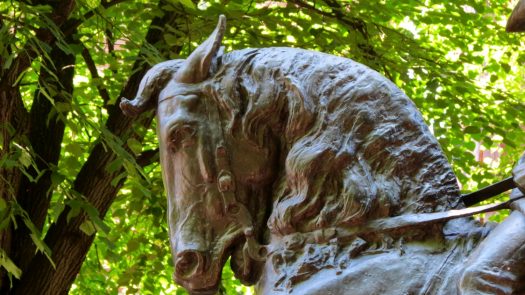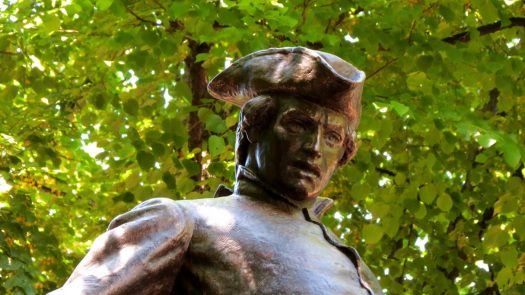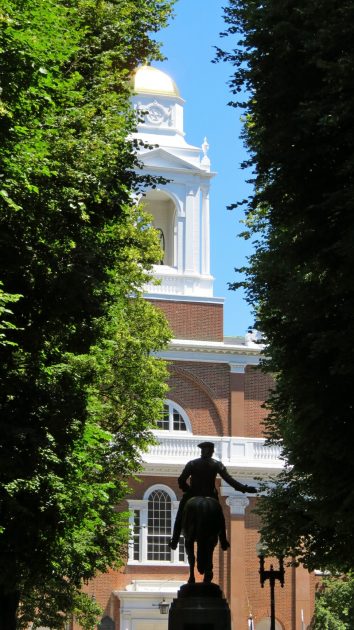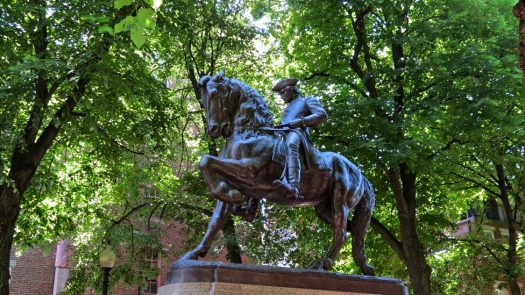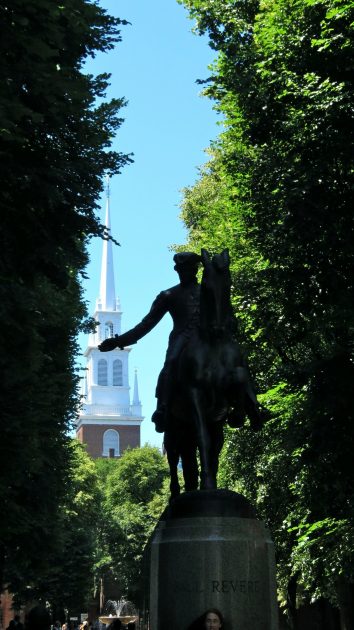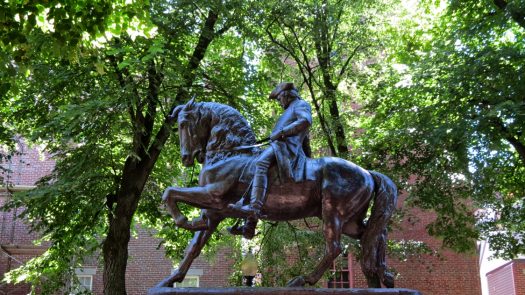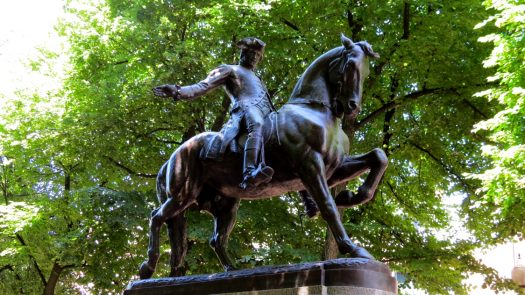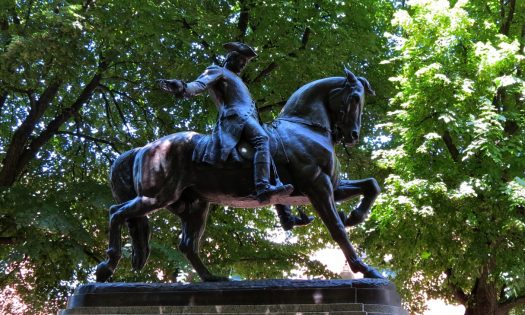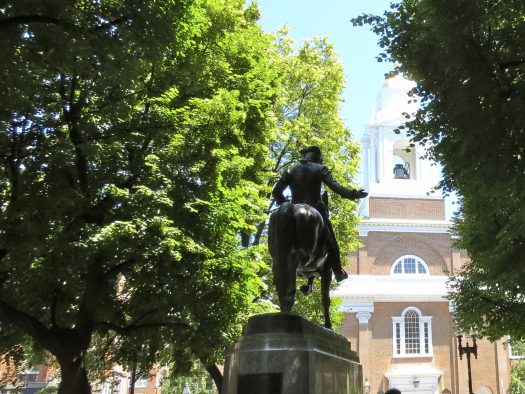- CountryUS
- Town:MA Boston
-
Year of creation:1899
- Rider(s):Revere, Paul
(1734–1818) became famous for alerting the local militia of the approaching British forces before the battles of Lexington and Concord. Revere was a prosperous and prominent Boston silversmith, who helped organize an intelligence and alarm system to keep watch on the British military. Revere later served as an Massachusetts militia officer, though his service culminated after the Penobscot Expedition, one of the most disastrous campaigns of the American Revolutionary War, for which he was absolved of blame. Following the war, Revere returned to his silversmith trade and used the profits from his expanding business to finance his work in iron casting, bronze bell and cannon casting, and the forging of copper bolts and spikes. Finally in 1800 he became the first American to successfully roll copper into sheets for use as sheathing on naval vessels.
- Sculptor(s):Dallin, Cyrus Edwin
(1861–1944) created only one equestrian statue: of Paul Revere in Boston, and that not without pain. Only the fifth version of the design was accepted, and once accepted there was a lack of funds, as a result of which the statue was only unveiled in 1940. Dallin was best known for his outstanding four-piece equestrian sculpture series called The Epic of the Indian, consisting of A Signal of Peace, in Chicago, The Medicine Man in Philadelphia, The Protest, and Appeal to the Great Spirit. The full-size plaster version of The Protest was exhibited at the 1904 Louisiana Purchase Exposition, where it won a gold medal. The mounted brave defiantly shaking his fist at an enemy was never cast as a full-size bronze, and survives only in statuette form.
-
The competition for the Revere statue in Boston started in 1883. Once Cyrus Dallin had been selected as the sculptor, it took years before his fifth version of the statue was accepted. Then the fundraising problems needed to be solved. It was thanks to a large private gift that the statue could be unveiled in 1940, some 57 years after the start of the process.
